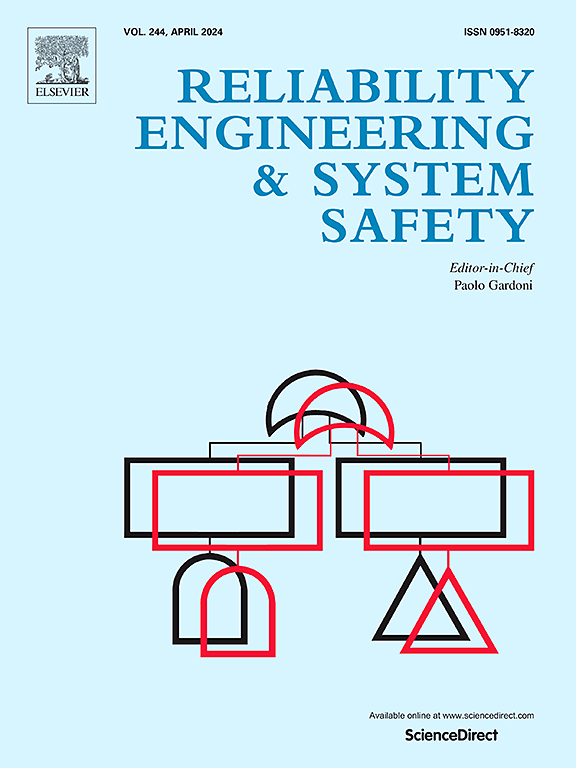System reliability evaluation for simultaneous production of orders with varying tolerances
IF 9.4
1区 工程技术
Q1 ENGINEERING, INDUSTRIAL
引用次数: 0
Abstract
Manufacturers may simultaneously receive orders for a product from different customers, each with varying tolerances for key quality characteristics (KQCs) based on cost and quality considerations. However, previous studies on system reliability evaluation typically classify products as conforming and non-conforming based on a fixed tolerance of each quality characteristic. In order to involve the simultaneous production of a product with multiple tolerances for a specific KQC that significantly impacts its subsequent application, products are classified into conforming grades to determine which specifications meet the KQC tolerances required by the orders. The manufacturing system is first modeled as a multistate flow network (MFN), where nodes represent buffers or quality inspection stations, and arcs represent workstations with identical machines. Each workstation has a multistate capacity depending on the number of malfunctioning or under-maintained machines. Then, a novel algorithm is proposed to calculate the system reliability, the probability that the manufacturing system can fulfill the demands for all grades derived from the orders. Results from numerical experiments provide valuable insights for decision-making in order acceptance and offer a comprehensive assessment of the quality improvements needed to achieve the desired system reliability.
同时生产不同公差订单的系统可靠性评估
制造商可能同时收到来自不同客户的产品订单,每个客户基于成本和质量考虑,对关键质量特性(kqc)有不同的公差。然而,以往的系统可靠性评估研究通常基于每个质量特性的固定公差将产品划分为合格和不合格。为了同时生产具有多个公差的特定KQC产品,并对其后续应用产生重大影响,产品被划分为合格等级,以确定哪些规格符合订单要求的KQC公差。制造系统首先被建模为一个多状态流网络(MFN),其中节点表示缓冲区或质量检验站,弧线表示具有相同机器的工作站。每个工作站都有一个多状态容量,这取决于故障或维护不足的机器的数量。然后,提出了一种计算系统可靠性的新算法,即制造系统能够满足订单中所有等级需求的概率。数值实验的结果为订单接受决策提供了有价值的见解,并提供了实现期望系统可靠性所需的质量改进的综合评估。
本文章由计算机程序翻译,如有差异,请以英文原文为准。
求助全文
约1分钟内获得全文
求助全文
来源期刊

Reliability Engineering & System Safety
管理科学-工程:工业
CiteScore
15.20
自引率
39.50%
发文量
621
审稿时长
67 days
期刊介绍:
Elsevier publishes Reliability Engineering & System Safety in association with the European Safety and Reliability Association and the Safety Engineering and Risk Analysis Division. The international journal is devoted to developing and applying methods to enhance the safety and reliability of complex technological systems, like nuclear power plants, chemical plants, hazardous waste facilities, space systems, offshore and maritime systems, transportation systems, constructed infrastructure, and manufacturing plants. The journal normally publishes only articles that involve the analysis of substantive problems related to the reliability of complex systems or present techniques and/or theoretical results that have a discernable relationship to the solution of such problems. An important aim is to balance academic material and practical applications.
 求助内容:
求助内容: 应助结果提醒方式:
应助结果提醒方式:


